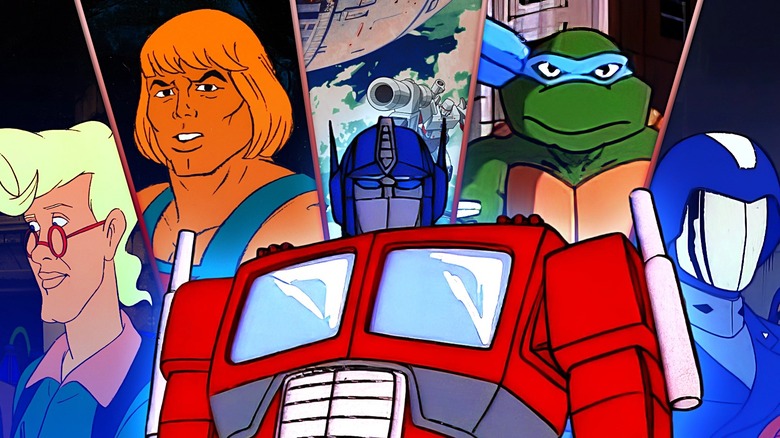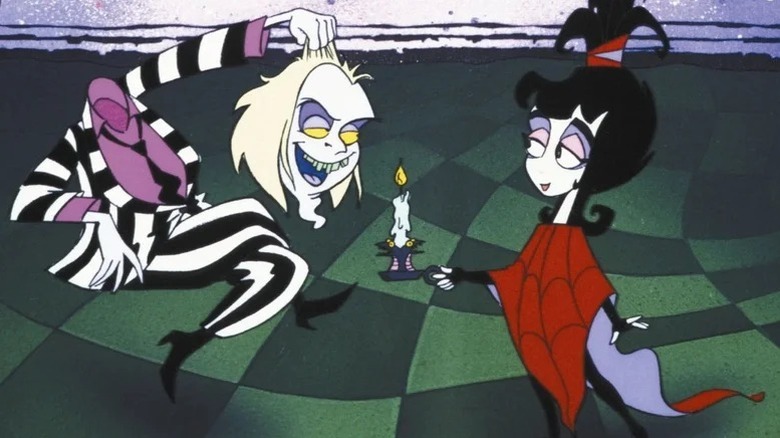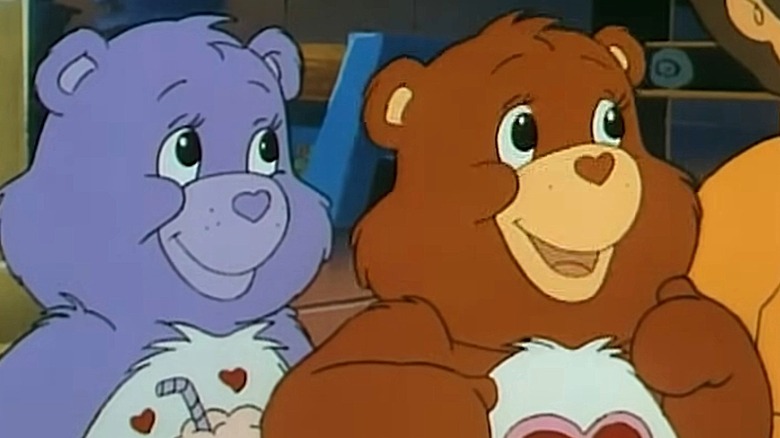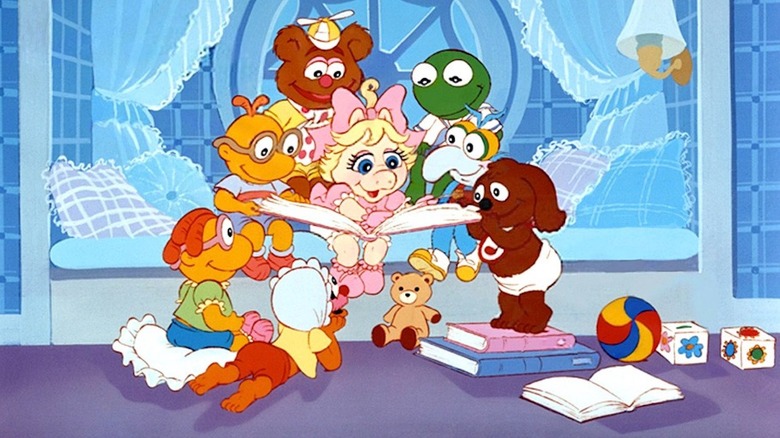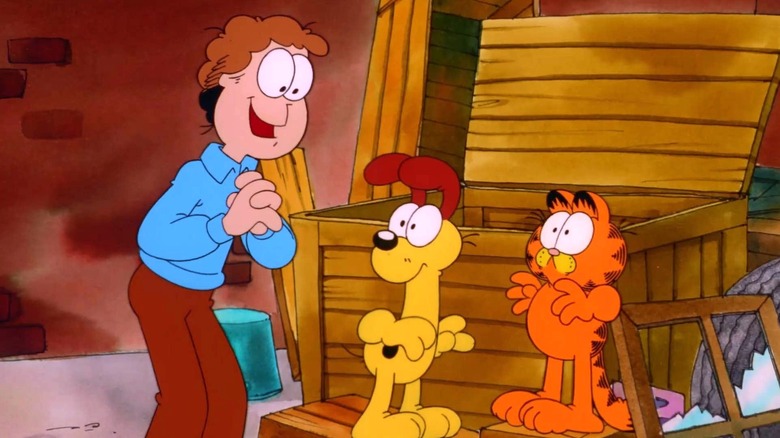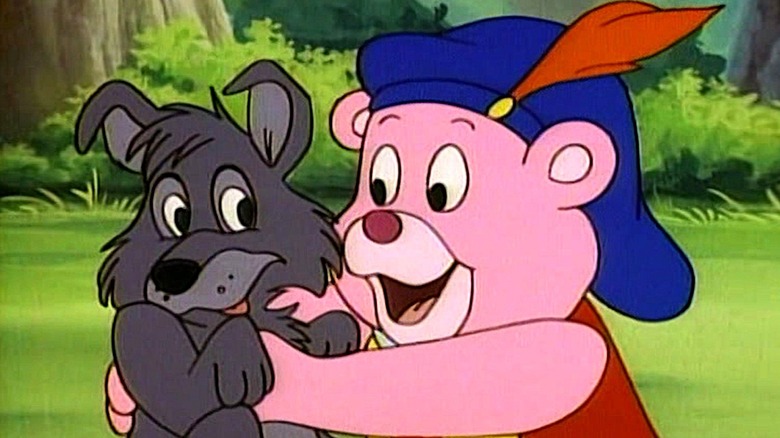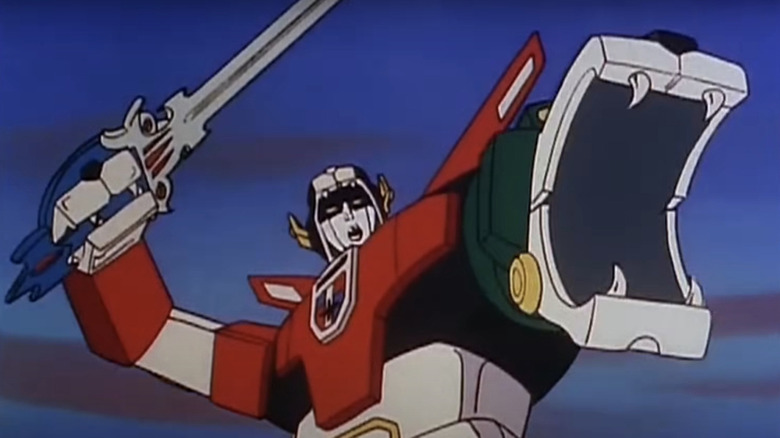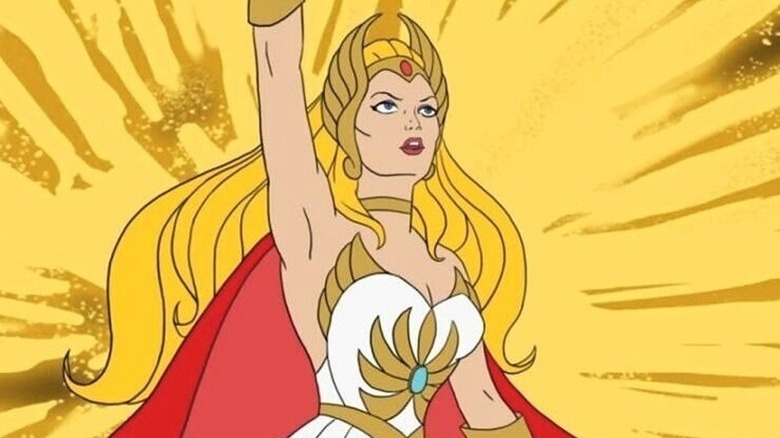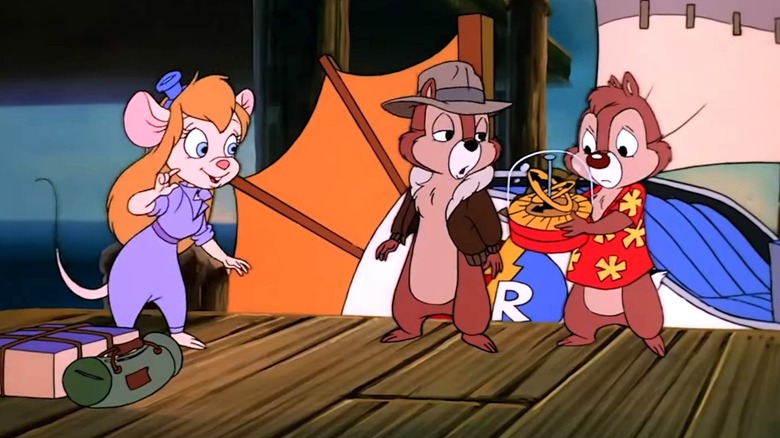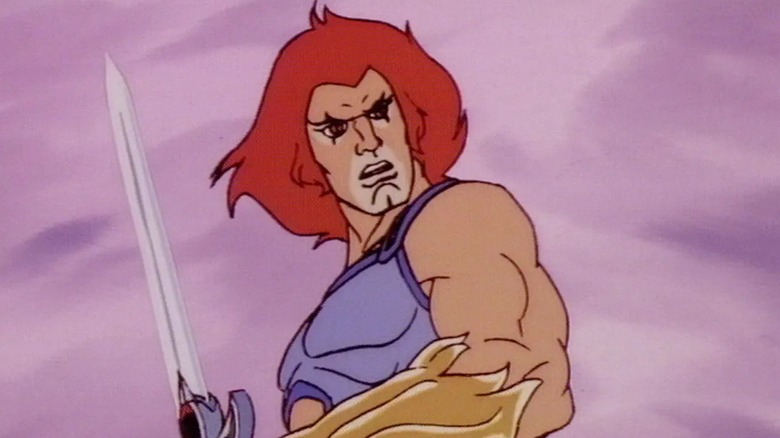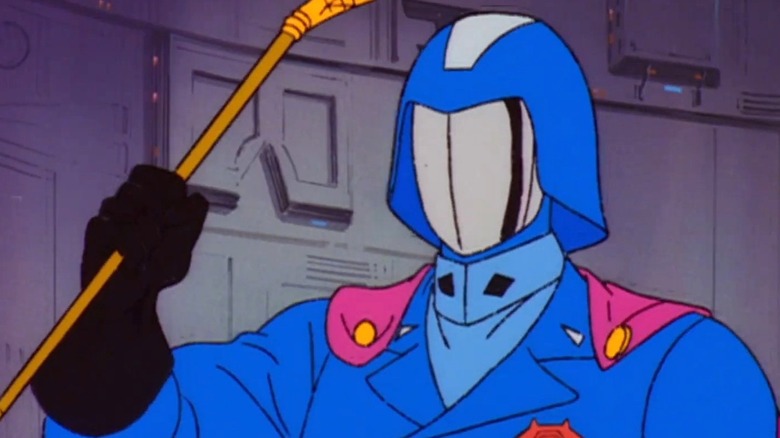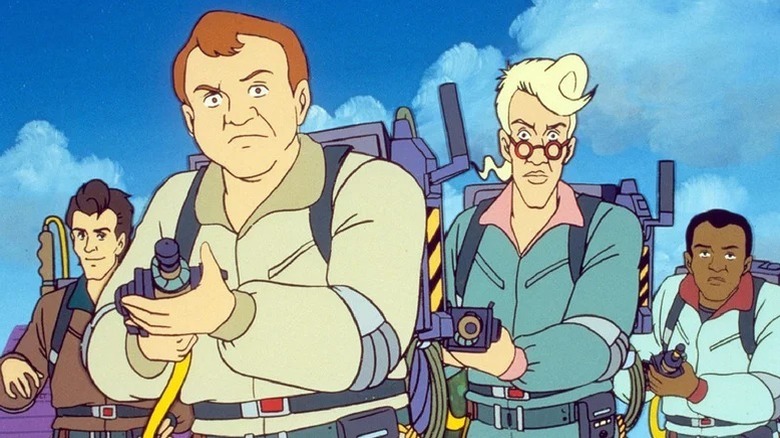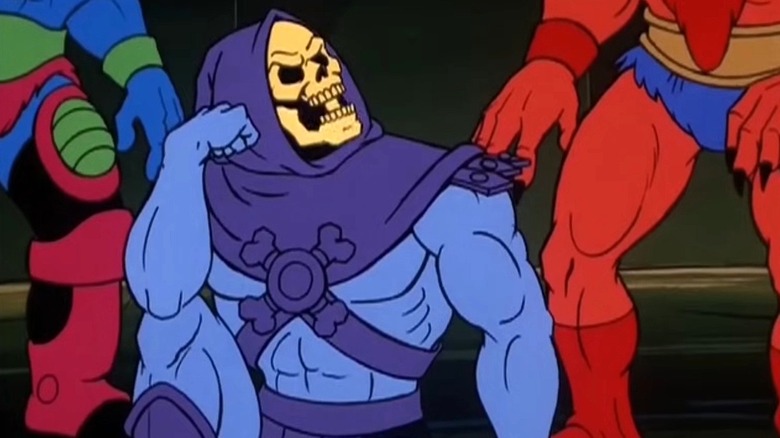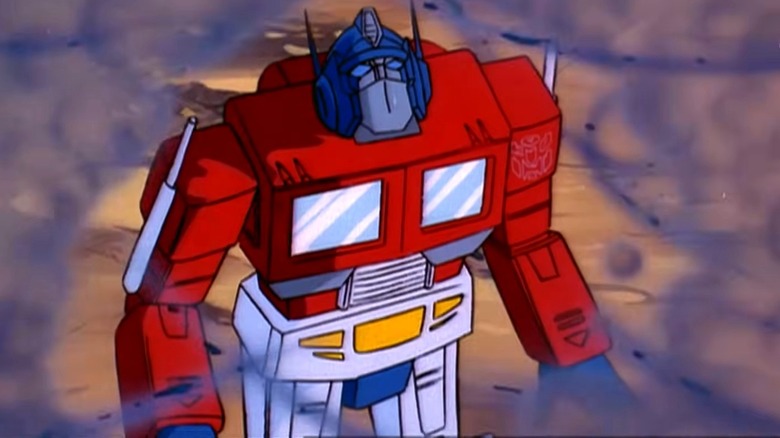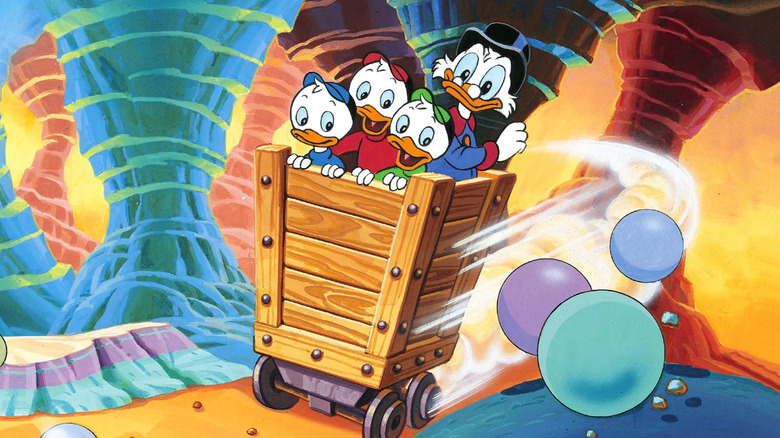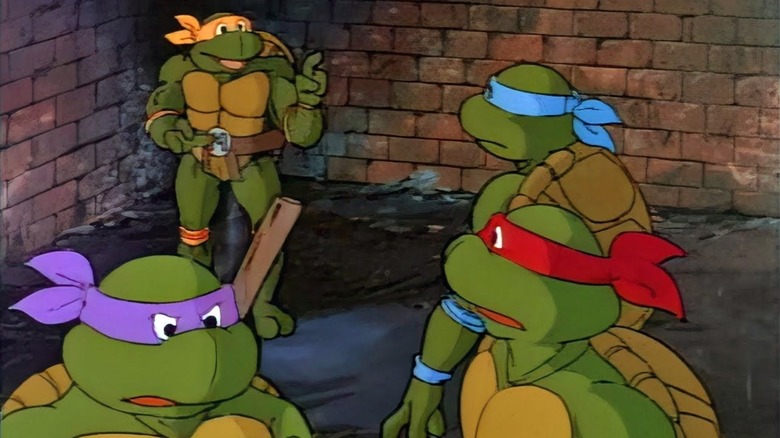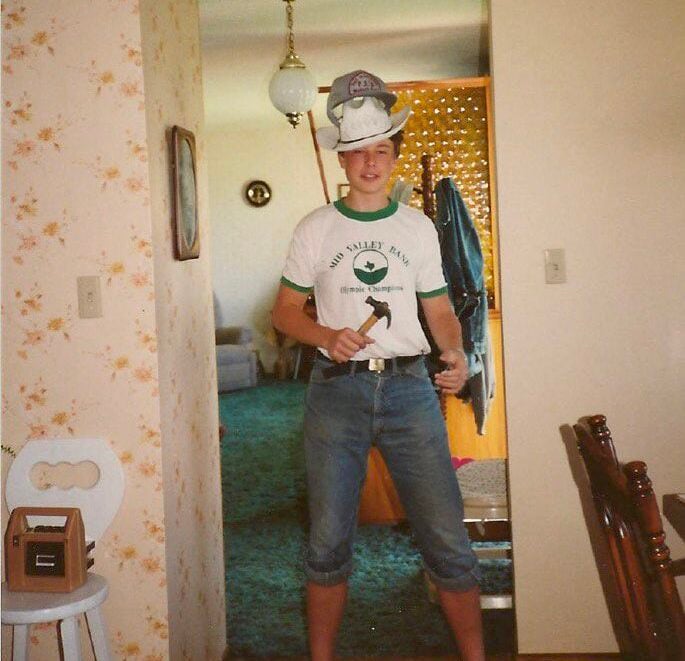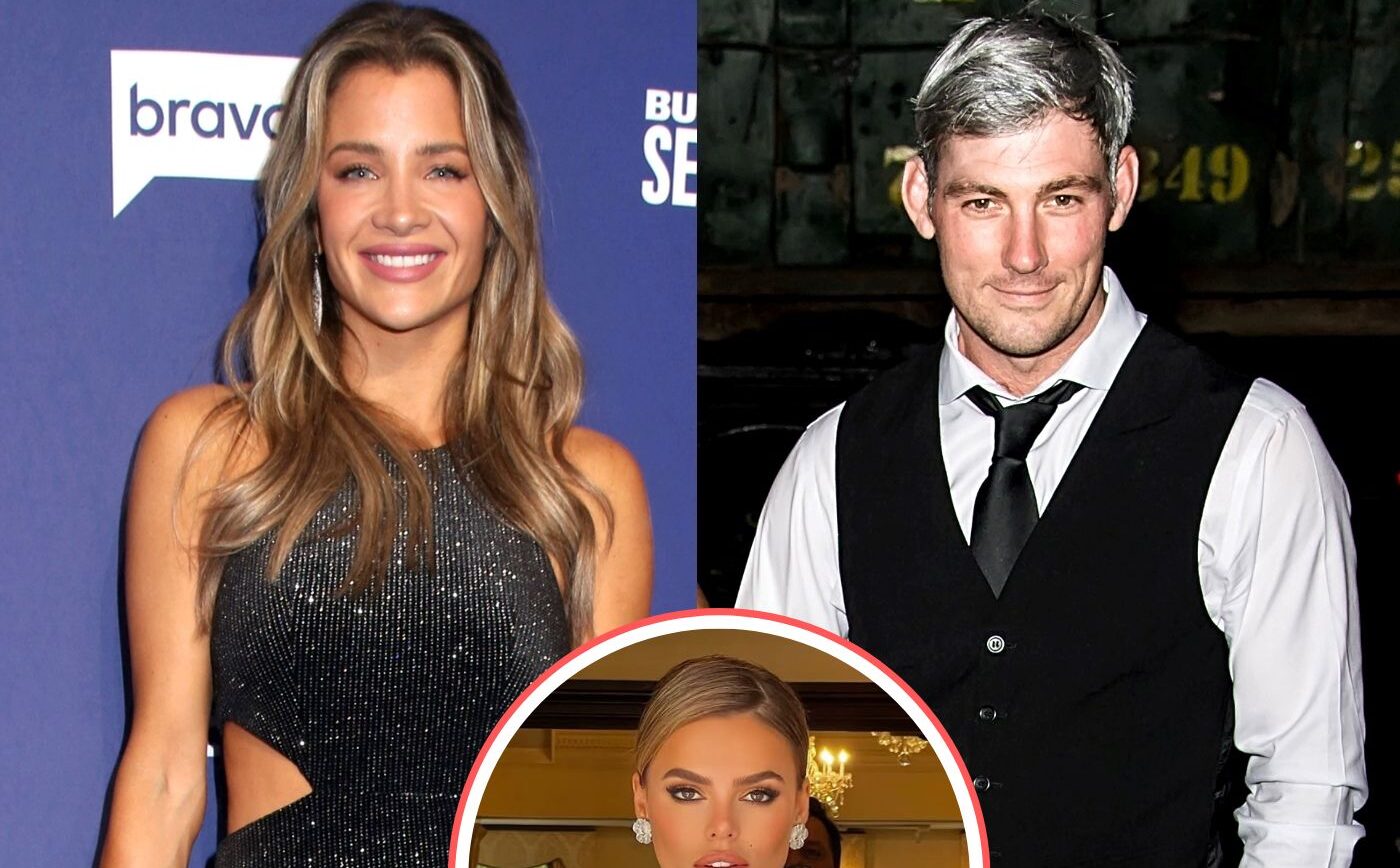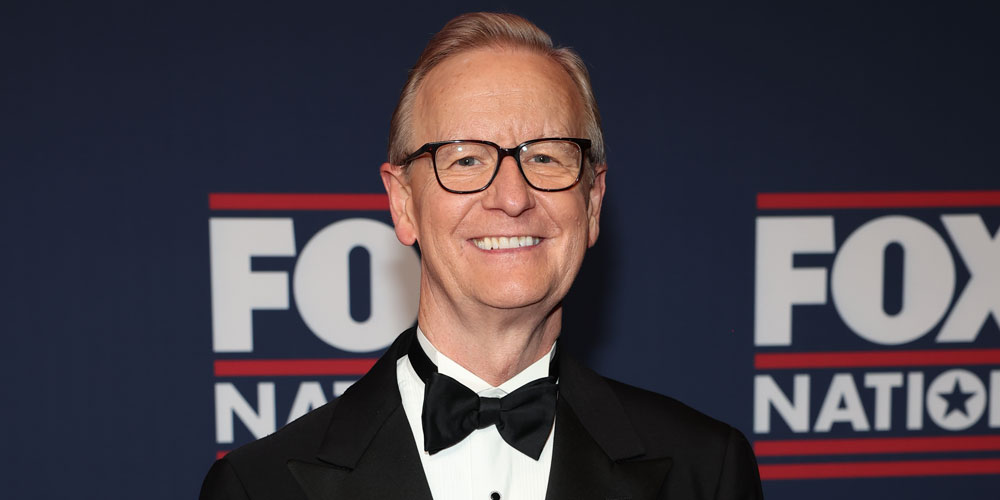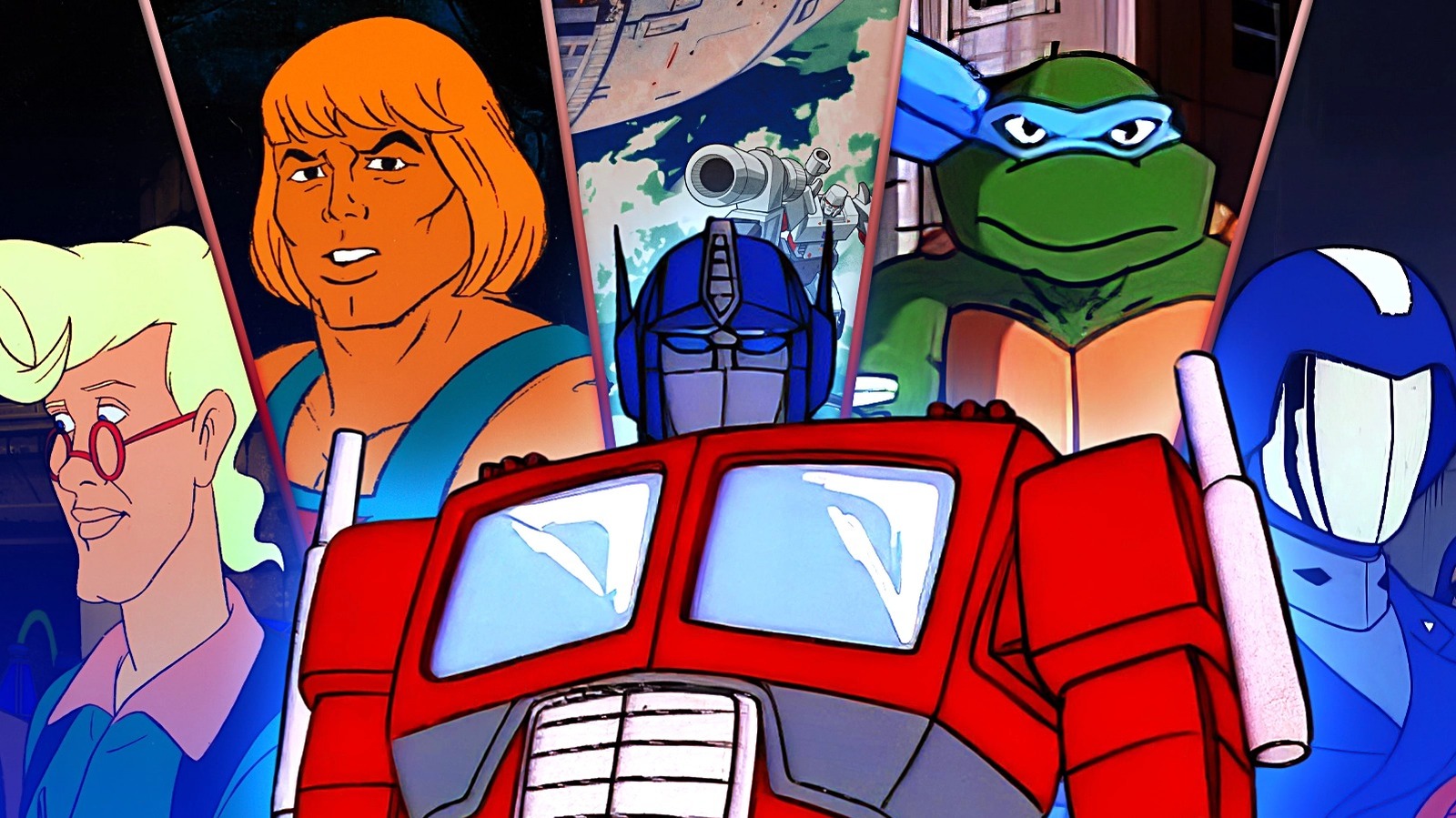
Cartoons from the 1980s hit differently. Maybe it was the fact they were all clever subliminal advertisements to bankrupt parents into buying endless merchandise and unnecessary items like Michaelangelo’s Sewer Exploration Belt (though this author still asked for two of them for his birthday). The point is these animated series continue to be spoken about to this day, remaining cherished pop culture artifacts.
Advertisement
But how in the world do you rank the best of the best? That proved tricky, to be honest. The /Film team wrestled with all options, considering which shows had the greatest legacy and influence — both then and now. Heck, I even suggested a Hell in a Cell match to settle a spot for “BraveStarr,” but the idea was vetoed as “too dangerous” or something. Nonetheless, shoutout to “BraveStarr,” “My Little Pony,” and “Spider-Man and His Amazing Friends,” as these shows deserve honorable mentions here.
With the formalities out of the way, let’s explore the best cartoons of the 1980s. Also, feel free to play the theme songs as you read along for the full nostalgia experience.
Beetlejuice
The Juice is loose in this animated series that had no right to be this good. Based on the popular Tim Burton movie from 1988 and developed by the filmmaker himself, this 1989 show tweaks the story slightly from what fans might be familiar with. In this version, Lydia Deetz is Beetlejuice’s pal — not his nemesis — and he isn’t trying to be a creep and make her his teenage bride. As a dynamic duo, they encounter all kinds of weird adventures and parodies of pop culture across four seasons of surreal storytelling.
Advertisement
While Michael Keaton and Winona Ryder don’t return to voice Beetlejuice or Lydia here, Stephen Ouimette and Alyson Court add their own spin to the characters. More importantly, “Beetlejuice” proves to be a fantastic companion piece to the overall franchise, possessing the same quirky sense of humor and bonkers premises from the films. The “Beetlejuice” cartoon is not free to stream, but no longer impossible to watch, as long as you don’t mind picking up a DVD boxset or buying digitally.
The Care Bears Family
Do you need a cartoon that feels like a never-ending hug? That’s what “The Care Bears Family” is for. The successor/soft reboot to “Care Bears” is all about a group of adorable bears that live in a fluffy and happy place called Care-a-Lot. Their purpose? To travel the world and spread love while preventing cold and heartless villains from infecting everyone with negativity. Sounds like the Care Bears are needed to deal with the relentless trolls on Twitter, right?
Advertisement
Is “The Care Bears Family” the best cartoon of the 1980s? No. However, its feel-good nature can’t be disputed, since it encourages kids to be kind and to uplift each other. Plus, it gives a cool backstory to those bears that you would see on greeting cards and as plushies. “Care Bears” continues to exist as a franchise today, standing the test of time and adding further credence to the importance of this animated show.
Muppet Babies
A Muppet movie scene inspired “Muppet Babies,” but no one could have predicted how seminal this extraordinary cartoon would have been when it was released in 1984. It influenced a whole generation of franchises to release younger versions of popular characters, because everyone wanted to recreate the lightning-in-a-bottle effect of this show. Truth be told, not many got it right, because they missed the entire point of the series.
Advertisement
The reason “Muppet Babies” works is because it puts imagination at the heart of everything and captures the essence of childhood. While the young versions of the Muppets live in a nursery, they play games and create stories that take them to different and faraway places, where anything and everything is possible. For eight seasons, young and old tuned in to see what would happen next, because the only limit to a “Muppet Babies” episode is the imagination. It’s a welcome reminder of how self-created childhood adventures remain the best times of anyone’s life.
Garfield and Friends
There have been numerous iterations of “Garfield” cartoons throughout the years, but nothing touches upon the timeless humor of the Jim Davis comic strips quite like “Garfield and Friends.” The show doesn’t only focus on the lazy orange cat with an insatiable hunger for lasagna, but it also features characters from Davis’ short-lived barnyard-themed “U.S. Acres” strip.
Advertisement
Airing for seven seasons between 1988 and 1994, “Garfield and Friends” refuses to dumb down the material for the audience at any point, as it dives right into the downright cynicism of Garfield. Like the famous strip, it makes full use of physical gags and clever wordplay to land its jokes, but it also contains cornerstone themes — whether it be the cat shipping Nermal to Abu Dhabi or Garfield feeling his ears bleed whenever Binky the Clown appears. One thing’s for certain, though: Lorenzo Music is still the voice that everyone hears in their head when they think of Garfield. It’s definitely not Chris Pratt’s take on the famous cat in “The Garfield Movie.”
Adventures of the Gummi Bears
If the theme song to this dashing and daring cartoon from the 1980s doesn’t get the blood pumping, check your pulse. Released in 1985, “Adventures of the Gummi Bears” is a medieval fantasy animated series about a mythical race of bears known as the Gummi Bears who want to live in peace and harmony among humans. It’s tough to do so when the evil Duke Igthorn and his dimwitted gang of ogres try to uncover their secrets and make their lives difficult, though. To defeat His Dukiness, the Gummi Bears guzzle on their special Gummiberry Juice that helps them bounce around like Mario whenever he sees goombas.
Advertisement
Running for six seasons, “Adventures of the Gummi Bears” marks a pivotal turning point in Disney’s animation for television that showcased what could be achievable with serialized storytelling. It’s way too easy to form attachments with Zummi, Gruffi, Grammi, Tummi, Sunni, and Cubbi and become invested in their adventures. Also, even though the ogres like Toadie are dimmer than a broken lightbulb, there’s something endearing about those goofs.
Voltron: Defender of the Universe
There’s something about the ’80s and its strange obsession with robots. Based on the Japanese anime series “Beast King GoLion” and “Armored Fleet Dairugger XV,” “Voltron: Defender of the Universe” sees pilots combine their smaller robots to form a giant Megazord-looking robot known as Voltron, capable of *checks notes* defending the universe and looking cool in iconic poses while doing so. Of course, each episode peaks when Voltron gets put together to dish out punishment to all baddies and save the day, because everything else before that is just fluff leading to this point.
Advertisement
“Voltron: Defender of the Universe” holds a special place in the hearts of all ’80s kids, and it received an excellent reboot titled “Voltron: Legendary Defender” that aired on Netflix in the 2010s. In addition to this, there’s a “Voltron” movie from the director of “Red Notice” and starring Henry Cavill, so don’t be surprised if this series receives a resurgence in popularity and turns into an even bigger property than what it already is in the near future.
She-Ra: Princess of Power
Released as a spinoff series to “He-Man and the Masters of the Universe” in 1985, “She-Ra: Princess of Power” follows Princess Adora — Prince Adam’s twin sister — who wields the Sword of Protection that allows her to transform into an almighty powerful superhero like her sibling. As She-Ra, Princess Adora battles against the evil forces of Hordak, who was once Skeletor’s master. So, if He-Man’s fighting what’s effectively Eternia’s Darth Vader, then it’s She-Ra who needs to take down Emperor Palpatine here.
Advertisement
While “She-Ra: Princess of Power” isn’t often remembered as influential as “He-Man and the Masters of the Universe,” it demonstrated what could be done with shared universes. More importantly, it built up She-Ra as her own important character across two seasons, allowing her to thrive even more in future productions — especially in the phenomenal Netflix reboot “She-Ra and the Princess of Power,” which was picked by /Film’s Caroline Cao as one of the best children’s animated series of the decade in the 2010s.
Chip ‘n Dale: Rescue Rangers
Remember those rascally chipmunks Chip and Dale from Disney shorts of yesteryear? Well, genius creatives Tad Stone and Alan Zaslove had a marvelous idea where they paired them with new characters — Gadget Hackwrench, Monterey Jack, and Zipper — in a show where they ran their own detective agency and solved crimes. The cartoon was called “Chip ‘n Dale: Rescue Rangers” and delighted viewers for three seasons with all its antics — and an unforgettable theme song courtesy of Mark Mueller and Jeff Pescetto, who also collaborated on “DuckTales.”
Advertisement
The show boasts beautiful animation coupled with stories overflowing with heart, humor, and high-stakes adventure. It’s impossible to not fall in love with every element of “Chip ‘n Dale: Rescue Rangers,” as it becomes both a comforting and compelling watch that should be revisited yearly. The animated series received its own movie of the same name in 2022. Funnily enough, the live-action-animated hybrid “Chip ‘n Dale: Rescue Rangers” turned out to be an unexpected wild industry satire, but it still harbored the marvelous magic of the original show.
ThunderCats
In the ’80s, the biggest fandom battle wasn’t between Marvel and DC. No, it was the clash between “He-Man and the Masters of the Universe” and “ThunderCats” fans. Both had highly publicized toylines and high-profile series, but it’s safe to say that He-Man edges the ThunderCats out in being slightly more influential in the grand scheme of cartoons from the 1980s.
Advertisement
Take nothing away from 1985’s “ThunderCats,” though. It’s a deeply imaginative series that sees a group of cat-esque aliens escape from their home planet of Thundera. After a series of events knock them off course, they settle on Third Earth where they need to defend and keep safe the Eye of Thundera from the clutches of the wonderfully named Mumm-Ra and other cacklinh villains. It’s an action-packed show with a host of unforgettable characters, but let’s be real here — most fans idolized Lion-O or Cheetara and despised the annoying Snarf, who should have been left back on Thundera.
“ThunderCats” was canceled after it became too expensive to produce and faced several accusations of only being on air to peddle toys to kids. To be fair, where is the lie here?
Advertisement
G.I. Joe: A Real American Hero
The concept of “G.I. Joe: A Real American Hero” isn’t exactly rocket science. Based on the Hasbro toyline, the cartoon is all about the special forces G.I. Joe team fighting back against the sinister Cobra, who hold grand plans for world domination. Unlike the action figures, though, the characters’ thumbs don’t break off under the slightest of pressure.
Advertisement
While the animated series features all the fan-favorite characters like Duke, Scarlett, and Roadblock, the uncontested star of the show is Cobra Commander. The over-the-top bad guy was brought to life by the voice of the late Christopher Collins and remains one of the most beloved rogues of ’80s cartoons. Yes, his plans absolutely suck, and he’s incapable of conquering an ant colony, but who would say no to seeing more of this good-at-being-bad villain on screen?
If you’re a fan of the 1983 series, make sure to check out 1987’s “G.I. Joe: The Movie” that Marvel helped to make. It’s a direct sequel to the show and a mandatory watch for fans.
The Real Ghostbusters
“The Real Ghostbusters” received the “real” in its name to differentiate it from Filmation’s animated series about a different Ghost Busters team. Despite this, the 1986 show is based on Ivan Reitman’s smash-hit “Ghostbusters” movie. Even though none of the actors from the film return to voice their respective characters, the likes of Lorenzo Music, Maurice LaMarche, Frank Welker, and Arsenio Hall cross streams to unleash powerful performances as Peter Venkman, Egon Spengler, Ray Stantz, and Winston Zeddemore respectively. Fun Fact: Lorenzo Music voiced Peter Venkman, played by Bill Murray in the movie, who would go on to voice Garfield in a couple movies.
Advertisement
Like the film, the show weaves in and out of the horror and comedy genres with ease, often valuing fun over spooks. In addition, the ghost Slimer plays a bigger role in the animated series, effectively becoming the mascot of the Ghostbusters. It’s tough to pick out the best episodes from “The Real Ghostbusters,” since the show ran for seven seasons and pumped out hit after hit, but no one can argue that season 2’s “The Revenge of Murray the Mantis” is a hilarious highlight that never gets old.
He-Man and the Masters of the Universe
It’s amazing how an animated series featuring a buff dude with the worst hairstyle of all time can be considered one of the best cartoons of the 1980s, but hey, it happened. “He-Man and the Masters of the Universe” isn’t only a show; it’s an institution. Fans cheer as Prince Adam summons the power of Castle Grayskull to become He-Man, the champion of Eternia and the only person able to stop the sneaky sorcerer Skeletor.
Advertisement
Yet, despite He-Man being the hero of the story, he would be nothing but a generic protagonist without his sensational dance partner, Skeletor. This villain, voiced by the irrepressible Alan Oppenheimer, knows how to insult people in the most creative ways — hands down, he would win “The Roast of the Masters of the Universe” without even trying too hard.
As testament to its popularity and legacy, no one has ever been able to touch the toes of the 1983 show’s success. Too many reboots and continuations have been accused of ruining “He-Man and the Masters of the Universe,” while there are genuine fears that Jared Leto is about to morb Skeletor in the live-action reboot. Regardless of whatever happens, at least the Filmation series will always live on in our hearts.
Advertisement
The Transformers
There’s more than meets the eye to “The Transformers,” that’s for sure. No one could have predicted that this 1984 series about a group of robots that morph into vehicles would turn into a multibillion dollar brand that consistently pumps out movies, video games, toys, and animated shows over four decades later. There’s so much media that the /Film team even had to put together a list of the correct order to watch “The Transformers” franchise, because it can be overwhelming to think about at times.
Advertisement
At its core, though, “The Transformers” is a story about good (the Autobots) versus evil (the Decepticons), as well as all the necessary action scenes that have everyone pondering which Transformer they would love to have at their disposal. The franchise evolved and changed over generations — pardon the pun — but the O.G. still holds a special place for being the one that kickstarted the global phenomenon. Furthermore, no matter who comes next, Peter Cullen and Frank Welker will forever be the voices of Optimus Prime and Megatron.
DuckTales
Everyone loves Donald Duck, who gets his feathers ruffled by the wind blowing in the wrong direction, but what about a show where his family members take center stage? That’s what happens in “DuckTales,” as Donald’s nephews — Huey, Dewey, and Louie — go and stay with their rich great uncle, Scrooge McDuck. Together, they get themselves into all kinds of mischief and adventure, often being joined by Scrooge’s pilot, Launchpad McQuack, who’s a reliable and trustworthy friend but woof — he could do with a few more flying lessons.
Advertisement
Running for four seasons between 1987 and 1990, “DuckTales” feels like Disney’s own “Indiana Jones” as Scrooge and his grandnephews embark on globe-trotting escapades and find themselves having to escape the most perilous situations. Heck, you can tell the series is a swashbuckling good time purely by watching the opening title sequence that sums up what to expect. It’s a duck-blur! The show also received a fantastic reboot in the form of 2017’s “DuckTales,” which rewrites some history but adds more mystery.
Teenage Mutant Ninja Turtles
It’s cowabunga time, because there could be only one winner here: “Teenage Mutant Ninja Turtles.” Based on the independent comic book by Kevin Eastman and Peter Laird — but less darker than the source material — the 1987 animated series elevated the franchise from nationally popular to global Turtlemania. You couldn’t escape the Heroes in a Half Shell as they conquered everything from toys to lunchboxes, cereal, and video games — all thanks to the success of this show that ran for 10 seasons.
Advertisement
“Teenage Mutant Ninja Turtles” connects with its audience because of its effortless action-comedy approach. Even though Leonardo, Donatello, Raphael, and Michaelangelo need to keep New York safe from the likes of Shredder and Krang, there’s always time for pizza and jokes. The show doesn’t take itself too seriously either, as the Turtles often try to disguise themselves by putting on coats and hats (but doing nothing about their faces), while there’s also a hilarious episode where Casey Jones tries to infiltrate the corporation Octopus Inc. by throwing on a suit over his hockey gear.
The franchise has evolved over the years, but the influence of 1987’s “Teenage Mutant Ninja Turtles” is still felt in the new shows and movies. For many fans, it also stands tall as the best cartoon of the 1980s.
Advertisement
About The Author
Discover more from imd369
Subscribe to get the latest posts sent to your email.
